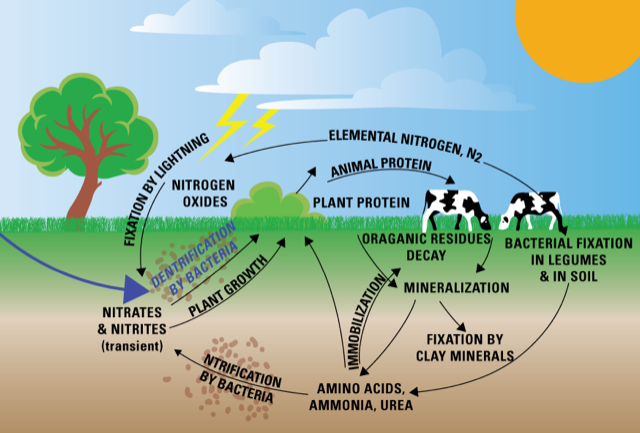
An ecosystem is made up of one type of community
A. True
B. False
C. Either
D. Neither
Answer
568.2k+ views
Hint: An ecosystem is a neighborhood where plants, animals, and other organisms, along with side weather and landscape, work together to make a bubble of life.
Complete step-by-step answer:
An ecosystem consists of the biological community of living organisms that occur in some particular area and the physical and chemical factors that make up its nonliving or abiotic environment. e.g - a pond, a forest, an estuary, a grassland. It is not made up of a single community.

Additional Information: It is a community of living organisms in conjunction with the nonliving components of their environment, interacting as a system. Through nutrient cycles and energy flows the biotic and abiotic components are linked together.
Energy enters the system through photosynthesis and is incorporated into the plant part.
By feeding on each other, animals play a crucial role within the movement of matter and energy through the system. They also influence the number of plants and microbial biomass present.
Decomposers release carbon back to the atmosphere by breaking down dead organic matter and by converting nutrients stored in dead biomass back to a form that will be readily used by plants and other microbes, facilitate nutrient cycling.
So, the correct answer is,' false'.
Note:
1. Ecosystems in similar environments that are located in several parts of the planet can find yourself doing things very differently just because they need different pools of species present.
2. External processes like climate and parent material generally control the resource input. Humans’ cumulative effects are large enough to influence external factors like climate although they operate within the ecosystem.
3. By the processes of disturbance and succession biodiversity affects the functioning of the ecosystem. The ecosystem delivers a spread of products and services on which individuals depend.
Complete step-by-step answer:
An ecosystem consists of the biological community of living organisms that occur in some particular area and the physical and chemical factors that make up its nonliving or abiotic environment. e.g - a pond, a forest, an estuary, a grassland. It is not made up of a single community.

Additional Information: It is a community of living organisms in conjunction with the nonliving components of their environment, interacting as a system. Through nutrient cycles and energy flows the biotic and abiotic components are linked together.
Energy enters the system through photosynthesis and is incorporated into the plant part.
By feeding on each other, animals play a crucial role within the movement of matter and energy through the system. They also influence the number of plants and microbial biomass present.
Decomposers release carbon back to the atmosphere by breaking down dead organic matter and by converting nutrients stored in dead biomass back to a form that will be readily used by plants and other microbes, facilitate nutrient cycling.
So, the correct answer is,' false'.
Note:
1. Ecosystems in similar environments that are located in several parts of the planet can find yourself doing things very differently just because they need different pools of species present.
2. External processes like climate and parent material generally control the resource input. Humans’ cumulative effects are large enough to influence external factors like climate although they operate within the ecosystem.
3. By the processes of disturbance and succession biodiversity affects the functioning of the ecosystem. The ecosystem delivers a spread of products and services on which individuals depend.
Recently Updated Pages
Master Class 12 Business Studies: Engaging Questions & Answers for Success

Master Class 12 Economics: Engaging Questions & Answers for Success

Master Class 12 English: Engaging Questions & Answers for Success

Master Class 12 Maths: Engaging Questions & Answers for Success

Master Class 12 Social Science: Engaging Questions & Answers for Success

Master Class 12 Chemistry: Engaging Questions & Answers for Success

Trending doubts
What is meant by exothermic and endothermic reactions class 11 chemistry CBSE

Which animal has three hearts class 11 biology CBSE

10 examples of friction in our daily life

One Metric ton is equal to kg A 10000 B 1000 C 100 class 11 physics CBSE

1 Quintal is equal to a 110 kg b 10 kg c 100kg d 1000 class 11 physics CBSE

Difference Between Prokaryotic Cells and Eukaryotic Cells




